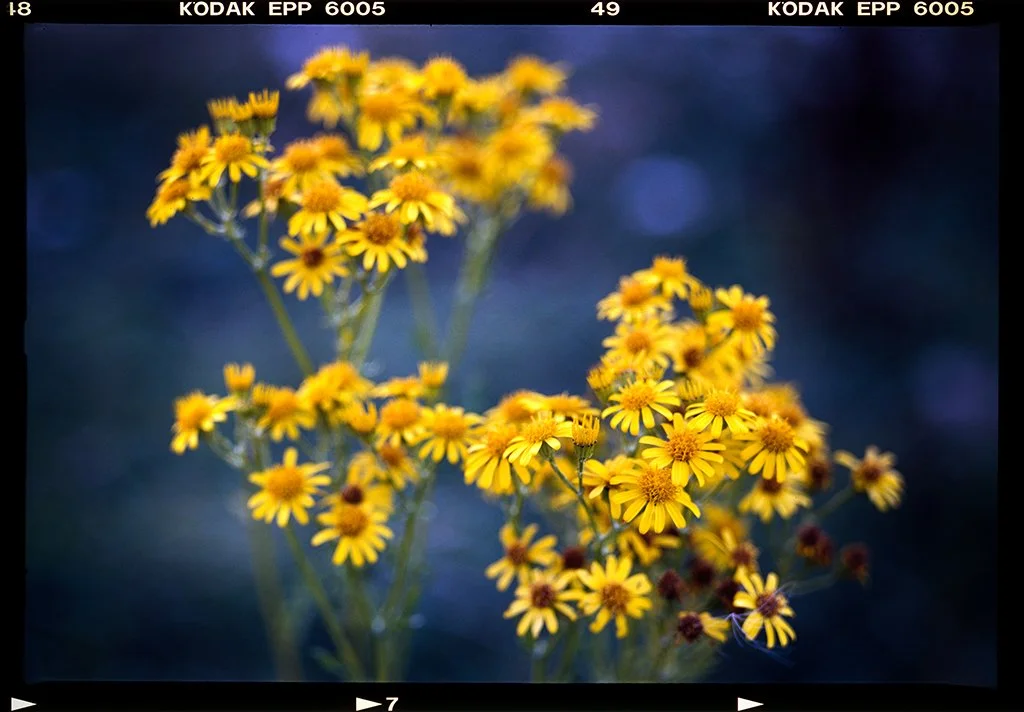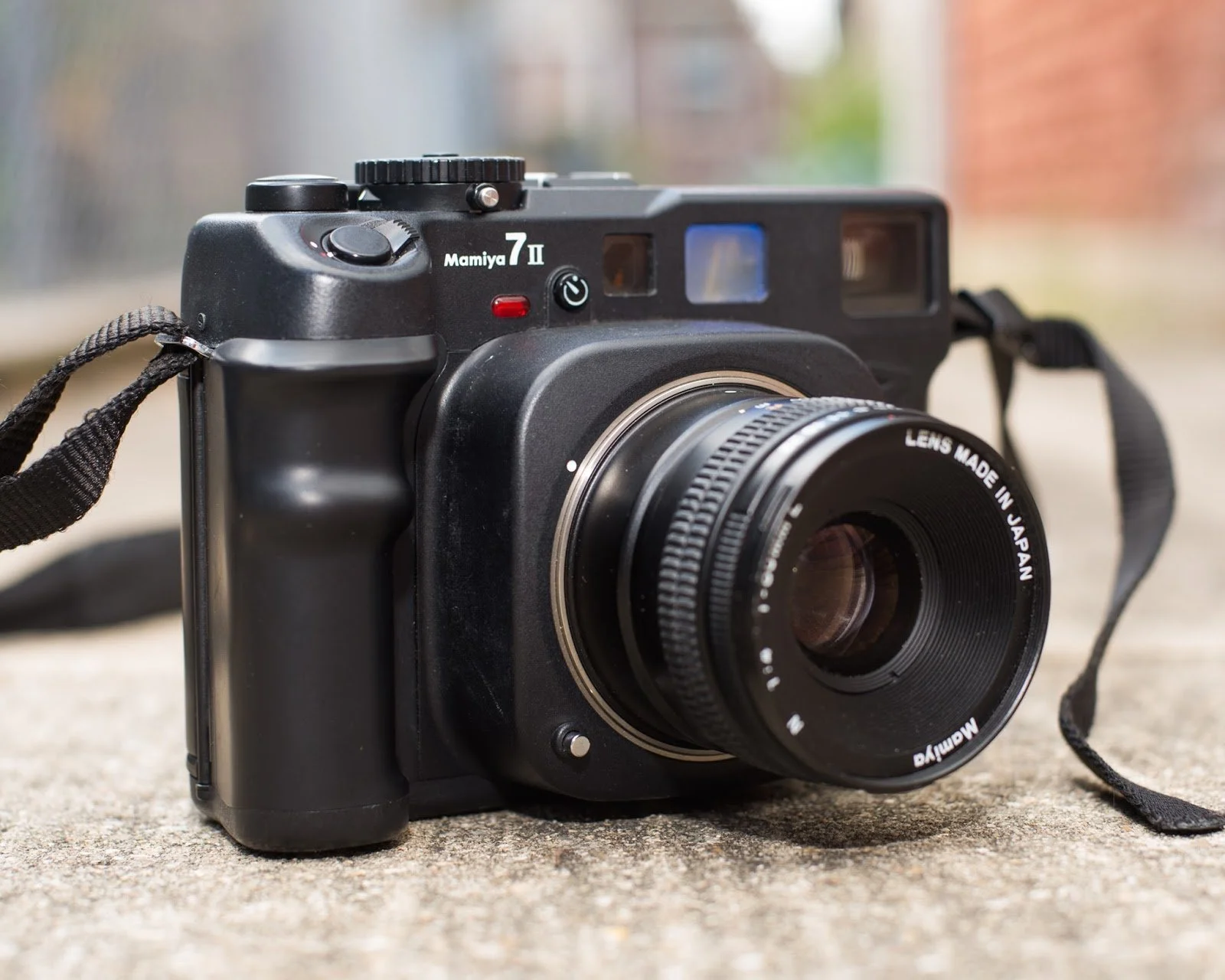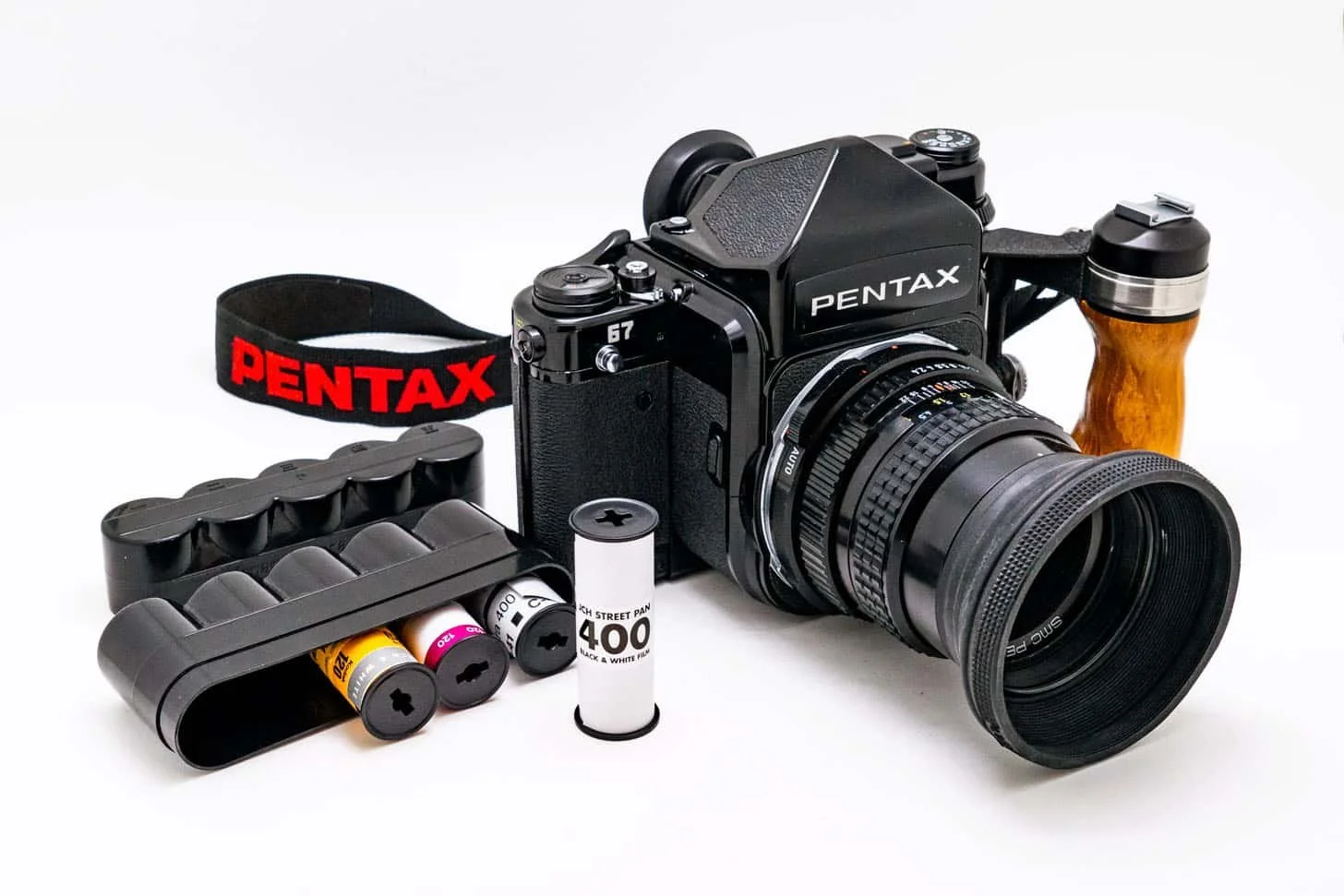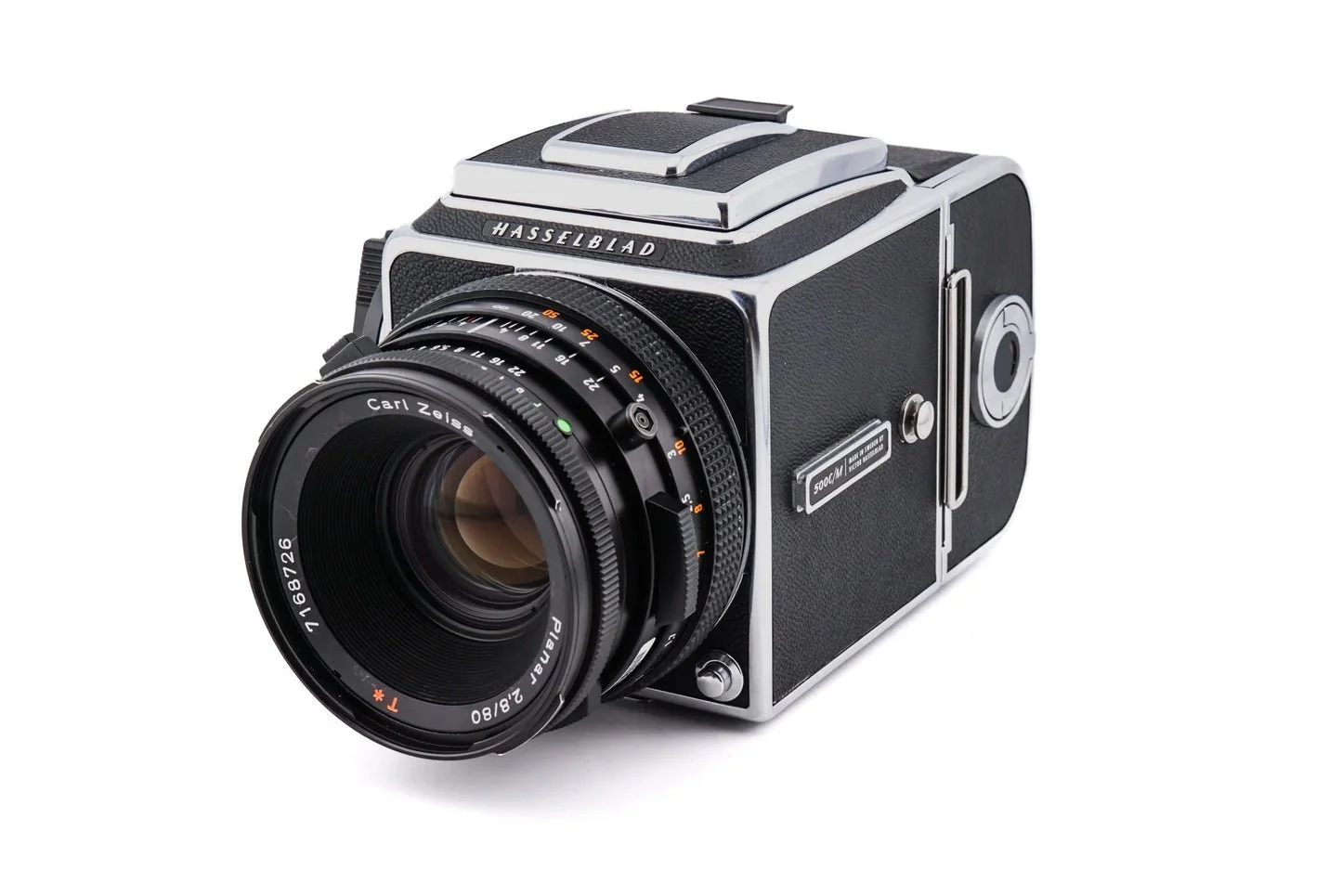Top 6 Film Cameras for Landscape Photography
Choosing the right film camera for landscape photography can be a daunting task, given the plethora of options available. It’s hard to transfer the awe of stunning vistas onto to film, but the right camera can elevate your work, capturing the nuances and expansive beauty of nature with stunning detail and richness. In this guide, we’ll explore the top 6 film cameras that are particularly well suited for landscape photography!
Thanks for reading the blog! Create your first order at nicefilmclub.com using code LANDSCAPE10 and receive 10% off your first order!
Linhof Technika IV
Price Point: The Linhof Technika IV typically costs between $1,500 and $3,000 on the used market today. Its price reflects its precision engineering and the high quality materials used in its construction.
Specs: This large format film camera uses 4x5 inch film, providing exceptional detail and resolution. It weighs around 6.6 pounds, which is substantial but manageable as far as large format cameras go. The film camera features extensive movements on both the front and rear standards, including rise, fall, tilt, shift, and swing, allowing for precise control over perspective and focus.
Key Features: The Linhof Technika IV is renowned for its precision, metal construction, and durability. It includes a built in rangefinder and optical viewfinder, which are not common in large format film cameras, making it somewhat easier to use. Its foldable design makes it more portable than many other large format film cameras, though it is still best used with a really sturdy tripod.
Build and Design: The film camera's robust metal body is built to withstand the rigors of fieldwork, yet it can be folded into a relatively compact form for transportation. The design prioritizes functionality and precision, with every control feeling very solid and purposeful.
Pros: The Linhof Technika IV offers exceptional build quality and precise movements, making it a great pick for setting up perfect landscape shots. Its versatility in movements allows for creative compositions and precise control over the plane of focus. The film camera produces images with just incredible detail and resolution.
2. Mamiya 7II
Price Point: The Mamiya 7II is a premium medium format film camera, with prices typically ranging from $2,500 to $4,000 on the used market. Its price is justified by its superb build quality, exceptional lens lineup, and outstanding image quality. This is a really hefty price tag, but this camera is so versatile it may just be worth it!
Specs: The Mamiya 7II shoots 6x7 cm images on 120 film. Weighing just 2.4 pounds, it is quite lightweight for a medium format film camera. It features interchangeable lenses with focal lengths ranging from 43mm to 150mm, and includes a built in light meter.
Key Features: One of the standout features of the Mamiya 7II is its rangefinder focusing system, which is both precise and quick. The medium format film camera is known for its extremely sharp and contrasty lenses, which contribute to its stellar reputation for image quality. Its relatively compact and lightweight design makes it a great choice for landscape photographers who need to hike or travel to their shooting locations and don’t want to lug up a large format film camera.
Build and Design: The Mamiya 7II is constructed with a robust and durable body that can handle the demands of outdoor photography. Its design is straightforward and user-friendly, with intuitive controls and a comfortable grip. The camera is built to last, with a high quality finish that can withstand harsh environments.
Pros: The Mamiya 7II offers exceptional image quality with its range of high quality lenses. Its lightweight and portable design make it ideal for landscape photographers who need to move around a lot. The built in light meter is highly accurate, simplifying the exposure process for those who don’t meter externally.
Cons: The rangefinder focusing system, while precise, can take some getting used to for those accustomed to SLRs or digital cameras. The camera and its lenses are expensive, and the limited availability on the used market can make it difficult to find. Additionally, the camera's plastic components, though durable, can feel less premium compared to all metal bodies, especially when taking into consideration the price point.
3. Pentax 67 (Medium Format)
Price Point: The Pentax 67 can be a more affordable medium format option, with prices typically ranging from $600 to $1,200 depending on condition, accessories, and lens choice. This makes it a relatively accessible entry point for photographers looking to explore medium format film.
Specs: The Pentax 67 uses 6x7 cm film, providing large negatives that capture exceptional detail. It weighs about 5.3 pounds, making it one of the heavier medium format options. It features a TTL (through the lens) metering system and a wide range of interchangeable lenses from 45mm to 300mm.
Key Features: The Pentax 67 is designed to feel like a large SLR, making it familiar to those transitioning from 35mm systems to medium format film cameras. It includes a mirror lock-up feature to reduce vibrations during exposure, which is particularly useful for long exposure landscape photography. The camera's bayonet lens mount system allows for quick and secure lens changes.
Build and Design: Built like a tank, the Pentax 67 is renowned for its durability and ruggedness. Its design is straightforward and functional, with an emphasis on ease of use and reliability. The camera's size and weight give it a solid, reassuring feel in the hands, but you’ll want a tripod to get the weight off you.
Pros: The Pentax 67 offers excellent image quality with its large negatives and high quality lens options. Its SLR design makes it easy to use for those familiar with 35mm format cameras. The camera is durable and can handle rough conditions, making it suitable for outdoor use.
Cons: The camera's weight can be a drawback, especially for film photographers who need to carry it over long distances. The mirror slap can cause vibrations, though the mirror lock-up feature helps mitigate this issue. Additionally, the lack of an interchangeable film back means you need to finish a roll before changing film types, which is not a huge deal but worth noting.
4. Hasselblad 500C/M
Price Point: The Hasselblad 500C/M is a high end medium format camera, typically priced between $1,200 and $2,500 on the used market. Its cost reflects its legendary status and the exceptional quality of its build.
Specs: This camera uses 6x6 cm film, offering a square format that is beloved by many and a ratio that has a long history in the world of fine art photography. It weighs around 3.4 pounds, making it relatively lightweight for a medium format film camera. It features interchangeable lenses and film backs, along with a waist level viewfinder.
Key Features: The Hasselblad 500C/M is known for its modular system, allowing film photographers to customize their setup with different lenses, viewfinders, and film backs. The film camera's lenses, made by Carl Zeiss, are among the sharpest and most well regarded in the industry. The leaf shutter mechanism ensures flash sync at all shutter speeds.
Build and Design: The camera is built with precision engineering and high quality materials, resulting in a robust and reliable system. Its modular design allows for flexibility and easy maintenance. The waist level viewfinder provides a unique shooting experience, great perspective, and a clear, bright image for focusing.
Pros: The Hasselblad 500C/M offers outstanding image quality with its superb lenses and medium format film. Its modular system provides great flexibility and allows for easy upgrades and repairs. The medium format film camera's build quality is exceptional, making it a reliable choice for professional or dedicated hobbyist.
Cons: The camera can be quite expensive, especially when considering the cost of additional lenses and accessories. Its manual operation may be challenging for those used to more automated systems. The square format, while unique, may not suit everyone's compositional style. Many may prefer a larger frame for landscape photography.
5. Fujifilm GX680 III
Price Point: The Fujifilm GX680 III is a relatively affordable option for a medium format camera with its capabilities, with prices ranging from $1,000 to $2,500 on the used market. It offers a lot of value for photographers seeking a versatile medium format system.
Specs: This camera uses 6x8 cm film, providing a larger negative than most other medium format systems, which is great for landscape photography. It weighs about 6.2 pounds, making it one of the heavier options. It features a rotating back for both portrait and landscape orientation and interchangeable lenses.
Key Features: The GX680 III is unique for its bellows focusing system, which allows for movements typically found in large format cameras, such as tilt and shift. This makes it an excellent choice for landscape photographers who need to control perspective and depth of field. The camera also has a built in electronic shutter and motorized film advance.
Build and Design: The camera is built with a sturdy, professional grade body designed to handle demanding shooting conditions. Its design incorporates elements from both medium and large format systems, offering the flexibility of movements with the convenience of medium format film. It’s surprising how little this camera seems to be talked about considering its specs.
Pros: The Fujifilm GX680 III offers exceptional image quality with its large negatives and high quality lenses. Its bellows focusing system provides creative control over perspective and focus. The rotating back is a convenient feature for quickly changing composition without moving the camera.
Cons: The camera's weight and size make it less portable and more challenging to use in the field. Its complexity and electronic components can be daunting for those not familiar with such systems. The cost of additional lenses and accessories can also add up quickly, but same goes for any camera.
6. Hasselblad XPan
Price Point: The Hasselblad XPan is a premium panoramic camera, with prices typically ranging from $2,000 to $4,500 on the used market. Its price reflects its unique capabilities and the high demand among film enthusiasts and pros. There’s debate over whether or not this film camera is worth the price, but there’s no doubt this makes an excellent landscape camera given the sheer size of the images.
Specs: The XPan shoots 24x65mm panoramic images on 35mm film, offering a unique aspect ratio ideal for sweeping landscapes. Weighing approximately 2 pounds, it is relatively lightweight for a larger film camera with such specialized features. The film camera features interchangeable lenses, with focal lengths including 30mm, 45mm, and 90mm.
Key Features: The standout feature of the XPan is its ability to switch between standard 35mm format and panoramic format mid-roll, giving film photographers great flexibility. The film camera's lenses, designed by Fujinon, are known for their sharpness and optical quality. The XPan also has a built in light meter and aperture priority automatic exposure mode, simplifying the shooting process even more.
Build and Design: The Hasselblad XPan is constructed with a robust, high quality metal body that is both durable and elegant. Its design is sleek and modern, with intuitive controls that are easy to use. The film camera's rangefinder focusing system ensures precise focusing, essential for achieving sharp panoramic images.
Pros: The XPan offers unparalleled panoramic capabilities on 35mm film, making it a favorite among landscape photographers. Its compact and lightweight design makes it highly portable, ideal for travel and outdoor photography. The ability to switch formats mid-roll adds versatility and convenience.
Cons: The XPan and its lenses are expensive and can be difficult to find on the used market. The rangefinder system may require an adjustment period for photographers used to SLRs or digital cameras. Additionally, the unique film format can lead to higher costs for film and development. This can be an uncomfortable ratio to begin shooting with unless you know exactly what it is you are trying to capture.
Enjoy the blog(s)? Leave a comment, share, and be sure to visit nicefilmclub.com for all your film development and scanning needs!







